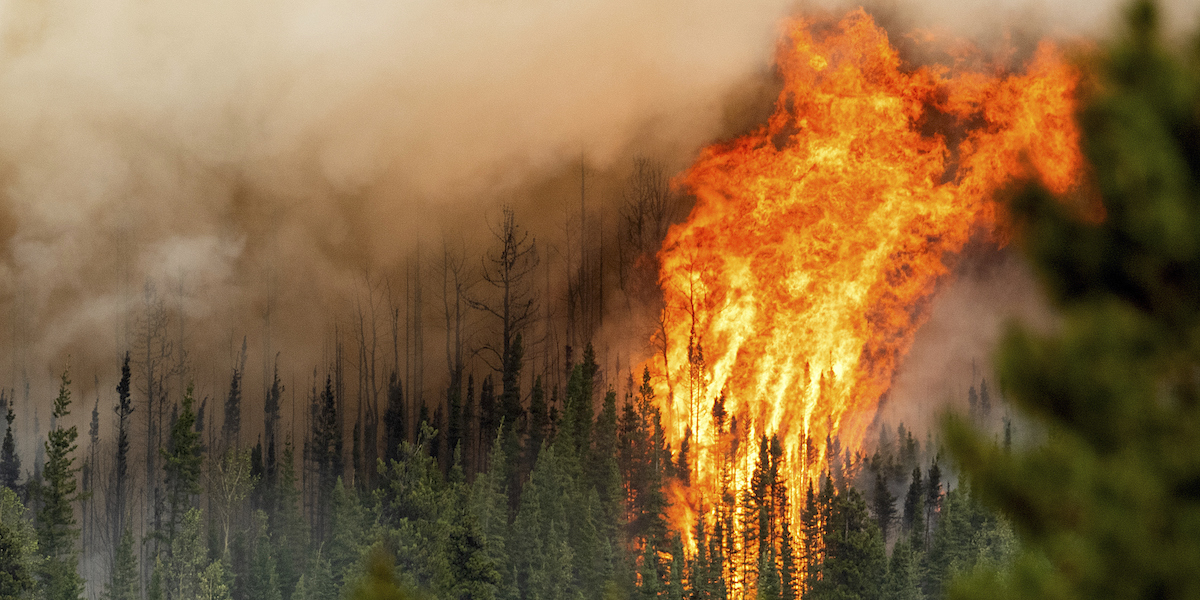A fire in British Columbia, Canada (AP Photo/Noah Berger)
According to many experts, the combination of drought and high temperatures will worsen the season, which is already the worst in the country’s history
In the past three months, thousands of fires have broken out in Canada that have burned 90,000 square kilometers, breaking a 34-year-old record: it is already the worst wildfire season in the country’s history. But things could get worse: Several state officials said many fires, potentially dangerous and widespread, will develop in the coming weeks due to warmer temperatures projected for late July through August.
Forest fires in Canada are common in the June-August season, mostly in the western provinces, but this year they have been going on since May, especially in the eastern regions. Fires broke out in April in British Columbia and Alberta in western Canada. In the following weeks, they also formed in the east, in the provinces of Nova Scotia, Quebec, and Ontario.
According to the Canadian Interagency Forest Fire Center (CIFFC), there were 3,675 more severe and extensive fires this year than in the past, which is 20 percent more than the average for the past 10 years. About 155,000 people have been forced to leave their homes, at least temporarily. There are currently 807 active fires.
The worst summer by far was 1989, when about 78,000 square kilometers of forest burned throughout the season. Experts say this year’s data is “off the charts” because the season is more than two months away. “It’s no exaggeration to say that this fire season will continue to set many records,” said Michael Norton, managing director of the Northern Forestry Center.
Fires take advantage of abnormal weather conditions, favored and increasingly frequent by climate change. The higher temperatures recorded in Canada have caused snow to melt faster and vegetation to dry out. In the event of lightning strikes or arson, plants burn faster and fires spread quickly.
In recent days, 34 degrees Celsius has been reached in northern Quebec, which is a higher temperature than cities to the south such as Miami. “Drought is a major contributing factor affecting all Canadian provinces and more severely in some areas,” Norton continued. “The combination of drought and above-average temperatures allows us to predict the continuation of freak fires in many parts of Canada.”
In Canada, about 3,800 firefighters work to put out fires. Another 1,800 firefighters arrived from other countries: Canada has signed cooperation agreements with the United States, Australia, New Zealand, South Africa, France, Mexico, Spain, Portugal and Chile.
Wildfires in Canada continue to affect many cities in the northern United States due to smoke carried by air currents. Weather conditions have prompted city governments to limit outdoor activities: Swimming pools, water parks and children’s summer camps have been closed in Cleveland and Madison. Many cities have extended homeless shelter services to daylight hours, usually only at night, and surgical masks have been recommended for outside use. Smoke from the Canadian fires also crossed the Atlantic Ocean and reached Europe.
– Also read: Fires in Canada continue to fill many US cities with smoke

“Infuriatingly humble social media ninja. Devoted travel junkie. Student. Avid internet lover.”


